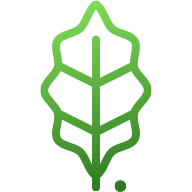6 Ways Technology is Impacting Arboriculture
The role of technology in arboriculture is nothing short of revolutionary. In this article, experts share six groundbreaking insights on how tech has transformed the industry. Starting with the transformative impact on arboriculture practices and concluding with the innovative use of bioacoustic sensors to monitor tree stability, the insights provide a comprehensive look at the intersection of technology and tree care. Read on to discover the future of arboriculture shaped by technology.
- Tech Transforms Arboriculture Practices
- Automated Tree Inventories Enhance Management
- Precision Irrigation Optimizes Tree Health
- Remote Sensing Detects Early Pest Issues
- Software Aids Risk Assessment
- Bioacoustic Sensors Monitor Tree Stability
Tech Transforms Arboriculture Practices
Technology has transformed arboriculture in ways I never imagined when I started climbing trees professionally two decades ago. Today, we're using drones to safely inspect towering eucalyptus trees and sonic tomography to peek inside trunks without harming a single leaf. These tools have saved countless trees and, frankly, my back from unnecessary climbs. But it's not just about fancy gadgets.
The real game-changer has been how tech has made us better stewards of urban forests. I recently used GPS mapping to help a Sydney council track and maintain over 10,000 street trees, something that would've taken months of legwork in the past. Mobile apps have turned every smartphone into a portable arborist assistant, making quick species ID a breeze. Climate-modeling software is now guiding our choices for future-proof urban canopies, ensuring the trees we plant today will thrive decades from now. But here's something most folks don't consider: augmented reality is revolutionizing client education. I can now show homeowners a 3D model of how pruning will affect their tree's shape and health, right there on their lawn.
And perhaps most surprisingly, social media has become an unexpected ally in tree preservation. I've used platforms like Instagram to rally community support for saving significant trees, turning local residents into passionate tree advocates overnight.

Automated Tree Inventories Enhance Management
Automated tree inventories streamline urban forestry management. City planners and arborists can now easily catalog and monitor all trees within a metropolitan area. By using automated systems, data collection becomes faster and more accurate, leading to better-informed decisions.
This approach not only saves time but also allows for the efficient allocation of resources. Improved urban forestry management enhances community spaces and contributes to the well-being of residents. Let’s support the adoption of these technologies to make our cities greener and healthier.
Precision Irrigation Optimizes Tree Health
Precision irrigation systems conserve water and optimize tree health. These systems use advanced sensors and analytics to deliver the right amount of water to each tree, preventing overwatering and underwatering. By fine-tuning the irrigation process, trees can thrive in various climates and conditions.
This technology not only saves water but also reduces the cost of tree maintenance. Healthy trees improve air quality and provide shade, making urban spaces more enjoyable. Invest in precision irrigation to ensure the vitality of your community's trees.
Remote Sensing Detects Early Pest Issues
Remote sensing technologies enable early detection of pest infestations and diseases. These tools can scan large areas, identifying issues before they become severe. Early detection allows for prompt intervention, which can save trees from serious damage or death.
By using remote sensing, tree health is monitored continuously without the need for frequent physical inspections. This proactive approach helps maintain the beauty and function of green spaces. Encourage the use of remote sensing to protect and preserve our trees.
Software Aids Risk Assessment
Specialized software aids in risk assessment and tree hazard mitigation. Arborists can use these programs to evaluate tree stability and the likelihood of failure under various conditions. By identifying high-risk trees, appropriate actions can be taken to mitigate potential hazards, such as pruning or removal.
This technology enhances public safety in parks and along streets by preventing tree-related accidents. Efficient risk management also extends the lifespan of healthy trees. Advocate for the integration of specialized software in tree care practices to enhance safety and longevity.
Bioacoustic Sensors Monitor Tree Stability
Bioacoustic sensors monitor tree stability and structural integrity. These sensors detect subtle sounds and vibrations within trees, indicating potential weaknesses or internal decay. By analyzing these signals, arborists can assess the structural health of trees without invasive methods.
Early identification of structural issues allows for timely interventions, reducing the risk of unexpected tree failures. This non-invasive monitoring supports the preservation and safety of mature trees in urban environments. Promote the use of bioacoustic sensors to ensure the health and safety of trees in your area.

